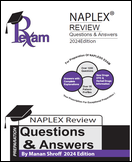
Which of the following statements is/are TRUR ABOUT Covid-19? [Select ALL THAT APPLY]
a. COVID-19 infection often begins with malaise, dry cough, dyspnea, fatigue, and feeling of fever.
b. Covid-19 infection has incubation period of 2- to 14-day.
c. In contrast to the sudden onset people report with influenza, progression of symptoms with Covid-19 virus have a slower onset.
d. During early phases of viral spread, symptoms began an average of 7 days before patients sought medical or emergent care.
e. Fever occurs in 89% Covid-19 symptomatic patients.
Which of the following statements is/are TRUR ABOUT Covid-19? [Select ALL THAT APPLY]
a. COVID-19 infection often begins with malaise, dry cough, dyspnea, fatigue, and feeling of fever.
b. Covid-19 infection has incubation period of 2- to 14-day.
c. In contrast to the sudden onset people report with influenza, progression of symptoms with Covid-19 virus have a slower onset.
d. During early phases of viral spread, symptoms began an average of 7 days before patients sought medical or emergent care.
e. Fever occurs in 89% Covid-19 symptomatic patients.
Answer: (a,b,c,e) The COVID-19 often begins with malaise, dry cough, dyspnea, fatigue, and feeling of fever. It progresses over an 11- to 14-day period. It has incubation period of 2- to 14-day. Some patients have had nausea, vomiting, and diarrhea. In contrast to the sudden onset people report with influenza, progression of symptoms with SARS-CoV-2 have a slower onset. During early phases of viral spread, symptoms began an average of 3.5 days (not 7 days) before patients sought medical or emergent care. Fever occurs in almost all symptomatic patients (89%), cough is very common (68%), and some patients have fatigue (38%), sputum production (33%), shortness of breath (19%), sore throat (14%), and headache (14%).
Try our Naplex QBank. www.pharmacyexam.com **Please note: This type of question will not show up in an MPJE. We are just posting to MPJE group for knowledge.



